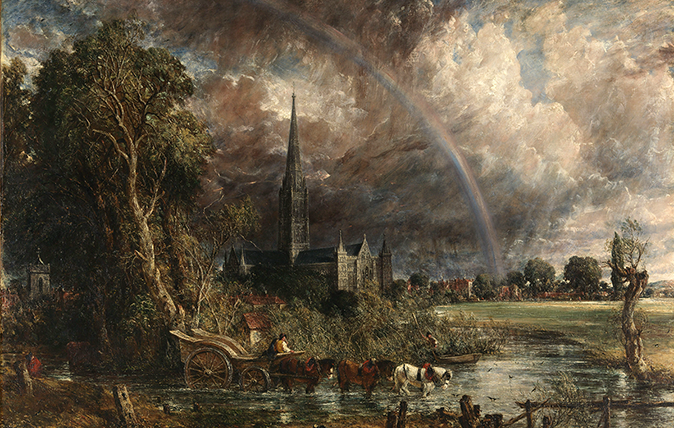Why do we get so many April showers?
It's the time of year when a torrential downpour can come and go in minutes — or drench one side of the street while leaving the other side dry. It's all to the good for growing, says Lia Leendertz as she takes a look at the weather of April.


The weather lore of spring, just as crops are being sown, is understandably most concerned with what sort of summer lies ahead of us — and, therefore, what sort of year it will be for yields.
The saying ‘If it thunders on All Fools Day, it brings good crops of corn and hay’ actually has a sound scientific basis. Thunderstorms happen when warm air rises from well-heated ground, leading to the formation of the highly charged cumulonimbus clouds that produce thunder and lightning. Ground that is warm enough to cause thunderstorms at this moment in the year only occurs when there has been an early spring — and an early spring is often the precursor of a good growing season.
As for April's famous showers? The Met Office confirms that April is indeed a particularly showery month thanks to the spring shift in weather patterns: 'The jet stream starts to move northwards, which can bring the first signs of warmth, but also tends to make our weather more unsettled due to low pressure systems being driven towards the UK.'
Showers are also more likely with the land being warmer than the sea: 'At this time of year, the sea temperature around the UK is at its lowest,' Met Office analysts explain. 'This results in warm land temperatures compared with sea temperatures, and so shower clouds develop preferentially over the warmer land.' Rising warmth and moisture boost plant growth, so the old saying that 'April showers bring forth May flowers' has some truth to it.

There are several eastern European sayings involving St George’s Day (April 23) being the day that green growth begins. One from Estonia maintains that ‘with his key George makes the grass grow’ and, in Lithuanian tradition, the saint is the keeper of the keys to summer, asked to make the grass grow and to disperse the clouds. Time to get out the lawnmower.
Something else to look out for this month is the budding of the trees, sadly less easy with the advent of ash dieback. ‘Oak before ash, in for a splash; ash before oak, in for a soak’ suggests that the weather will be drier if oak comes into leaf first.
What to look for in the sky in April: A 'super moon', a meteor shower and a total eclipse
On April 8, the super new moon brings perfect conditions for spotting galaxies and star clusters. The full moon of April 23 is the Pink Moon, so-called because it arrived with one of the first spring flowers, pink-hued moss phlox.
Exquisite houses, the beauty of Nature, and how to get the most from your life, straight to your inbox.
It will sadly not be observable from the UK, but there will be a total eclipse of the sun over parts of the US, Canada and Mexico on April 8.
Later in the month, April 22–23 sees the peak of the Lyrid meteor shower.
Lia Leendertz is the author of ‘The Almanac: A Seasonal Guide to 2024’ (Gaia, £12.99)

Curious Questions: Are rainbows actually circular?
Martin Fone delves into the science — and art — of the rainbow.

Constable ‘added rainbow after his masterpiece first went on display’

How the rainbow has inspired art, myth and poetry through the ages
The rainbow’s fleeting radiance rings in the human mind like bells and has inspired art, myth and poetry for aeons,

12 of the world's most extraordinary and beautiful weather phenomena — and what makes them happen
We can all identify bolts of lightning, rainbows and stormy skies, but what of some of the earth’s more unusual
